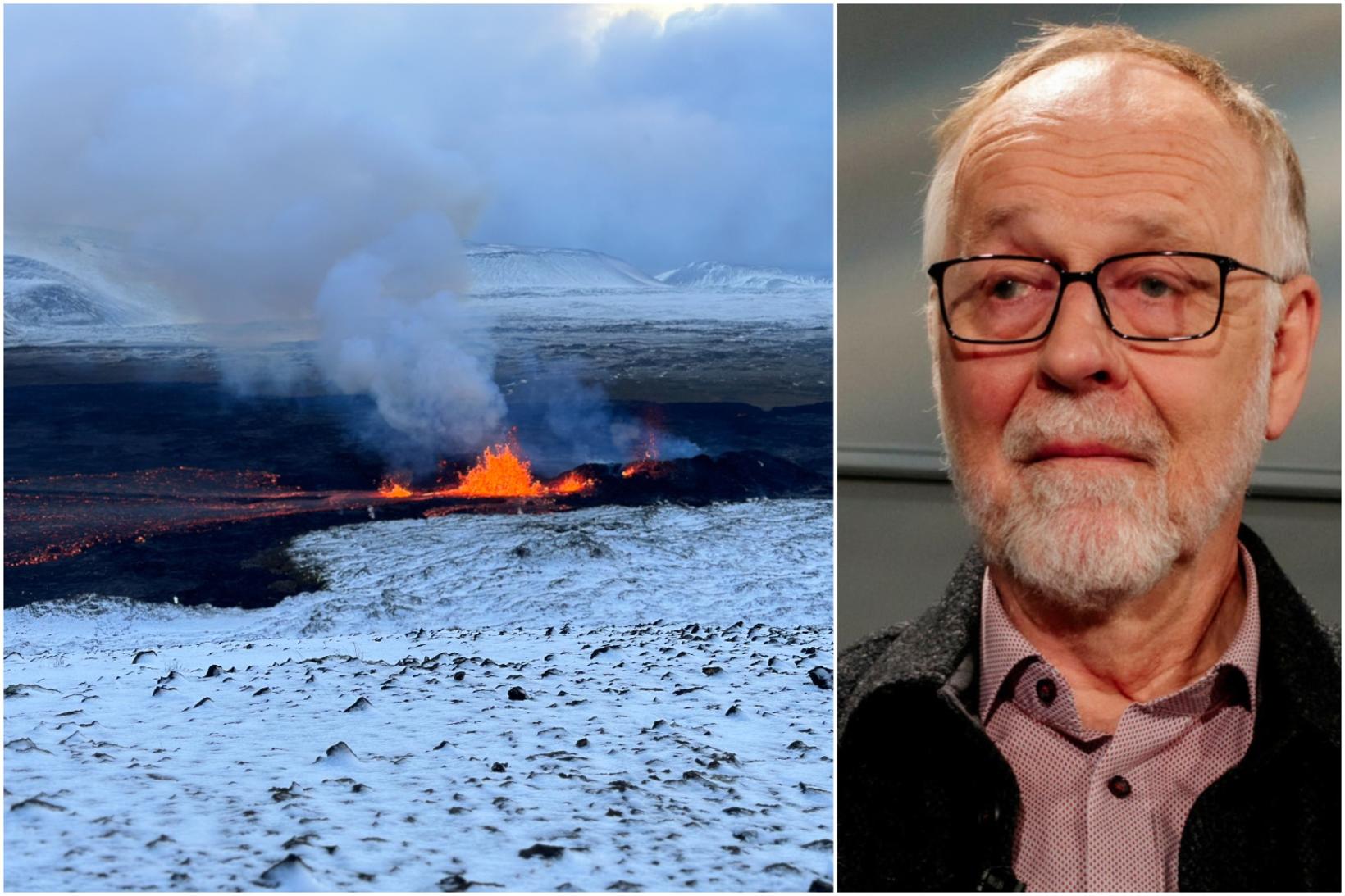Building up to a new eruption
Páll Einarsson, professor emeritus, says that the latest eruption on Reykjanes peninsula is behaving in a similar manner as the Krafla-fires in 1975-84. Composite image
It is obvious that magma collection has begun under Svartsengi and another eruption is about to happen on the Reykjanes peninsula. This is what Páll Einarsson, professor emeritus at the University of Iceland’s Earth Sciences department, says.
“It’s quite obvious, considering what’s going on,” he tells Morgunbladid, asked if he thinks the volcanic system is accelerating into another eruption. “It’s not necessarily certain that there will be an eruption, but it’s quite clear that the magma chamber is collecting magma. That’s not a matter of dispute.”
Although the eruption at Sundhnúkagígar crater row has been completed, there is a great likelihood of another eruption in the area and it seems that it will increase with each passing day. Land started rising again at Svartsengi after the eruption broke out there on Monday night. The speed of the land rise is higher than it was before the eruption and according to Einarsson, it is because the land rise generally slows down with time.
The professor says that it is not possible to determine whether the earthquakes will result in an eruption rather than a magma-run. He points out that it is “not very long” before the magma starts becoming a magma-run. As has been reported in the newspaper, the fires have been similar to the behaviour of the Krafla-fires, which occurred between 1975 and 1984. In those years, about 20 magma-runs occurred in Krafla, nine of which ended in an eruption.
“We still don’t know how exactly this region on the Reykjanes peninsula follows this pattern.”







/frimg/1/57/93/1579337.jpg)

/frimg/1/57/94/1579405.jpg)